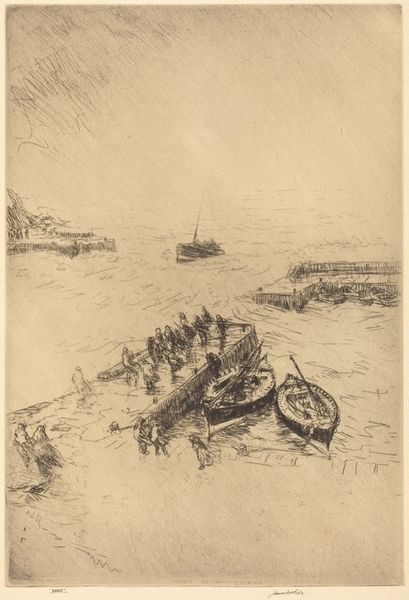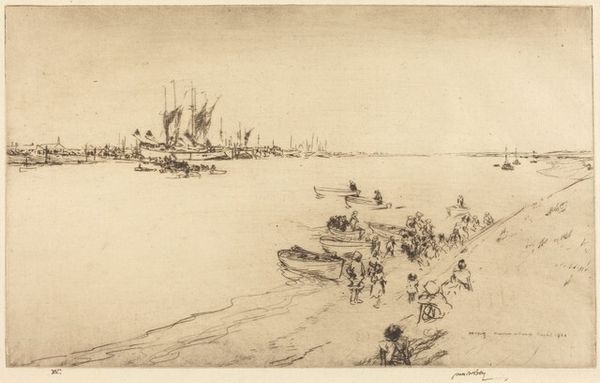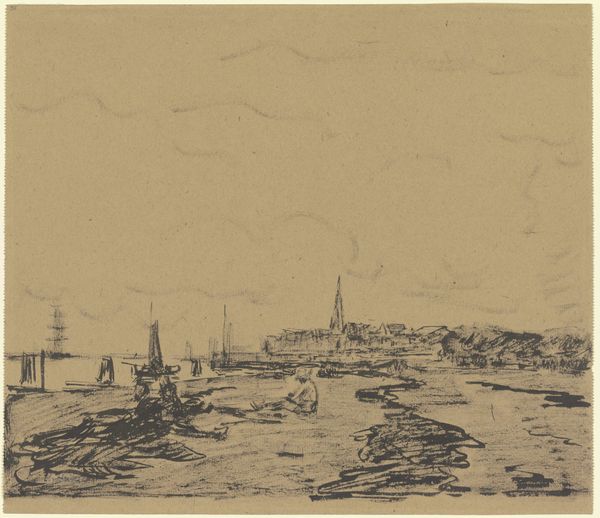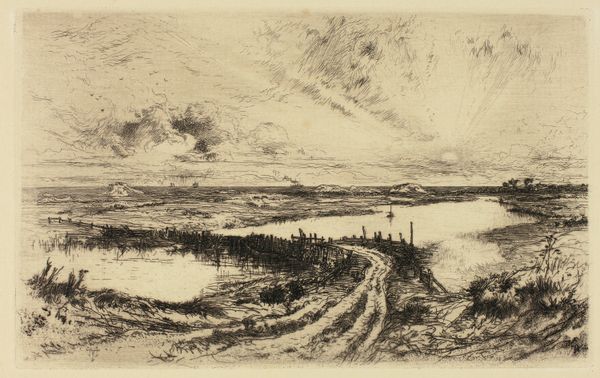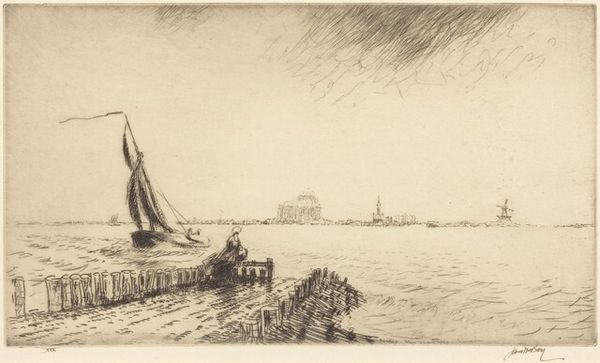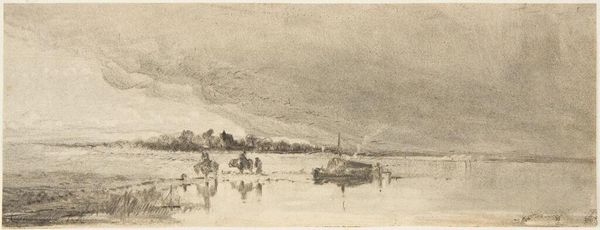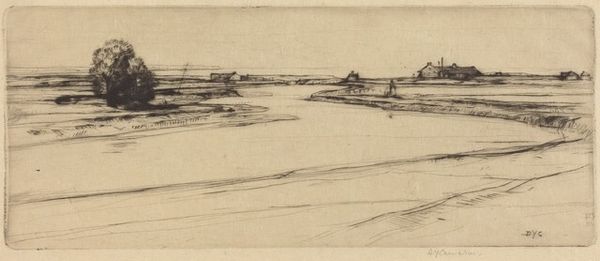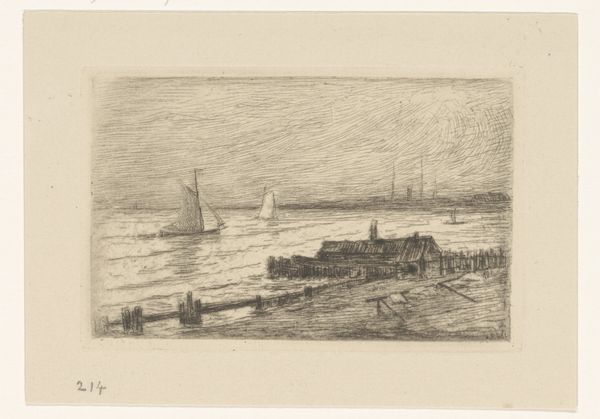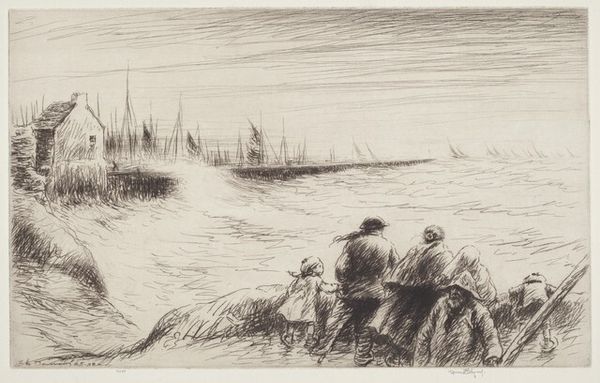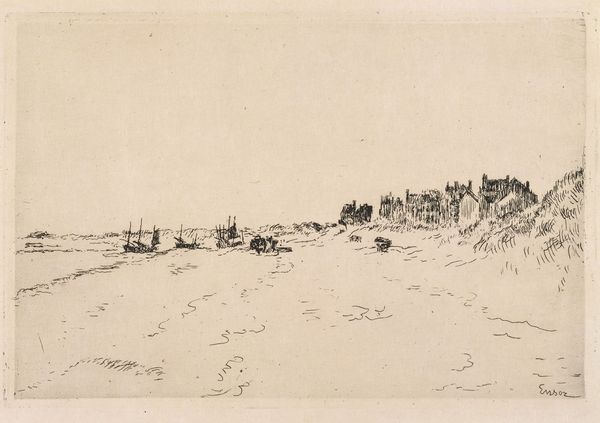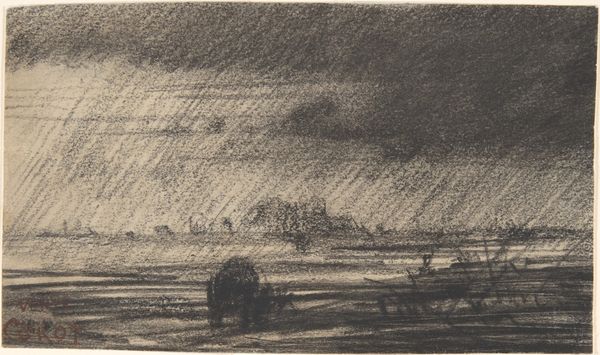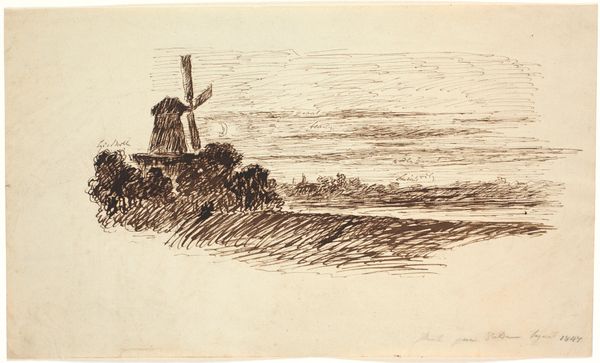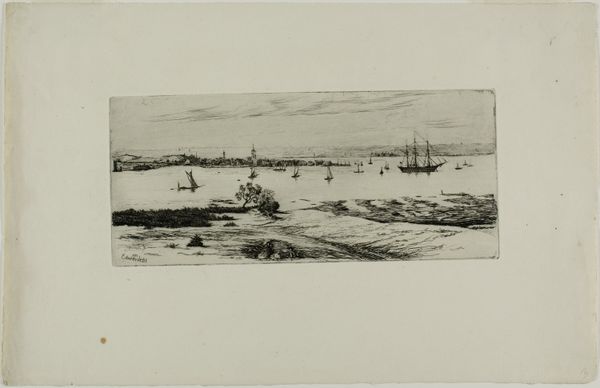
print, etching
#
ink drawing
# print
#
etching
#
landscape
#
etching
#
realism
Copyright: National Gallery of Art: CC0 1.0
Editor: This is James McBey's "A Flood in the Fens," an etching from 1922. It feels…bleak, almost apocalyptic, but the figures huddling together give a sense of resilience. What do you see in this piece? Curator: It’s precisely that tension you pinpoint that resonates. McBey’s choice to depict this flooded landscape invites us to consider the vulnerability of marginalized communities. Flooding disproportionately impacts those lacking resources for adaptation and recovery. Notice how the figures are positioned - are they displaced people clinging to higher ground? What does it say about access and agency when environmental crisis occurs? Editor: I didn't consider that so explicitly, but now that you mention it, the figures do look displaced rather than, say, recreational. Does McBey's background provide any insight? Curator: Absolutely. McBey worked as a bank clerk before becoming a war artist. His experiences of societal structures and wartime displacement surely influenced his understanding of power dynamics. How might that perspective shape his depiction of these figures confronting environmental adversity? Editor: So you’re saying it is not merely a landscape, but a commentary on societal inequities exposed by a natural disaster? Curator: Precisely. The beauty of art lies in its potential to reveal uncomfortable truths, spark dialogue, and push us to consider our responsibilities to each other and the planet. What do you think this means for the future? Editor: I initially saw a depressing image, but now it's a challenge – a call to confront those inequities. Thanks, this was helpful. Curator: It was my pleasure, every conversation reframes these important contexts and allows new voices to participate.
Comments
No comments
Be the first to comment and join the conversation on the ultimate creative platform.
